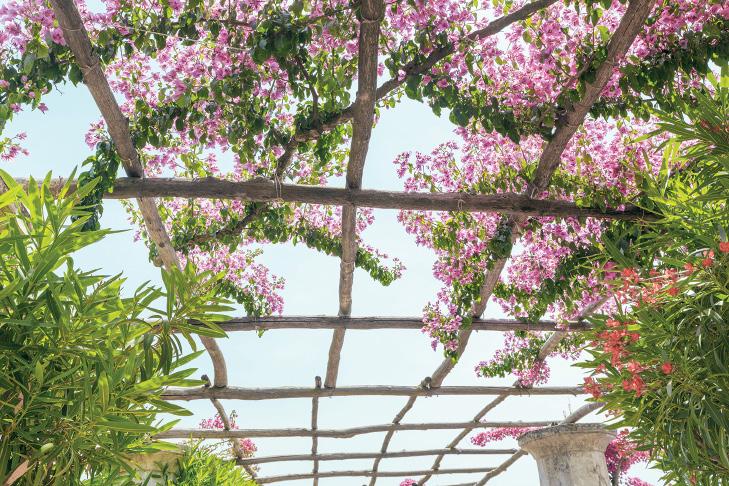
1 minute read
PERGOLAS
Did you know?
Pergolas are a beautiful piece of garden architecture and although their styles and materials may have changed, their purpose has remained the same for over 3000 years. The earliest known surviving garden design plan, dating back to 1400 BC, belonged to an Egyptian high court official of Thebes, detailing a pergola design that arched over the entry way into the garden.
Pergolas have served many purposes throughout time such as beautiful hanging gardens for the rich elite. They have also served as a functional means for certain species of harvestable vegetation to grow for the common worker and provided a means for vining plants to climb for the backyard enthusiast. Elegant shade structures, pergolas, derive their name from the Latin word “pergula” which refers to a “projecting eave,” commonly found as an extended roof or arbor.
The first known use of the term pergola dates back to the 1640s during the late medieval period. Similarly during this time, Eastern Asia was creating their own pergola structures, which featured curved beams that emulated their arched architecture structure. The Great Italian Renaissance in the 17th century brought new life to the pergola. Perhaps more for their beauty than the functionality, this artistic revival period brought pergolas that featured smooth stone pillars that were large and dramatic. BY TERRI FERRAGUT

This beautiful ancient pergola in southern Italy hovers an entire walking path bolstered by original marble columns.
High above the Mediterranean Sea, sits an ancient terrace pergola at Villa Rufolo in Ravello, Italy. Dating back to the 13th century, ancient pergolas are a common sight in the province of Salerno.

The renaissance Villa La Pietra Garden is the home to this ancient pergola walk way in the hills outside Florence, Italy.










